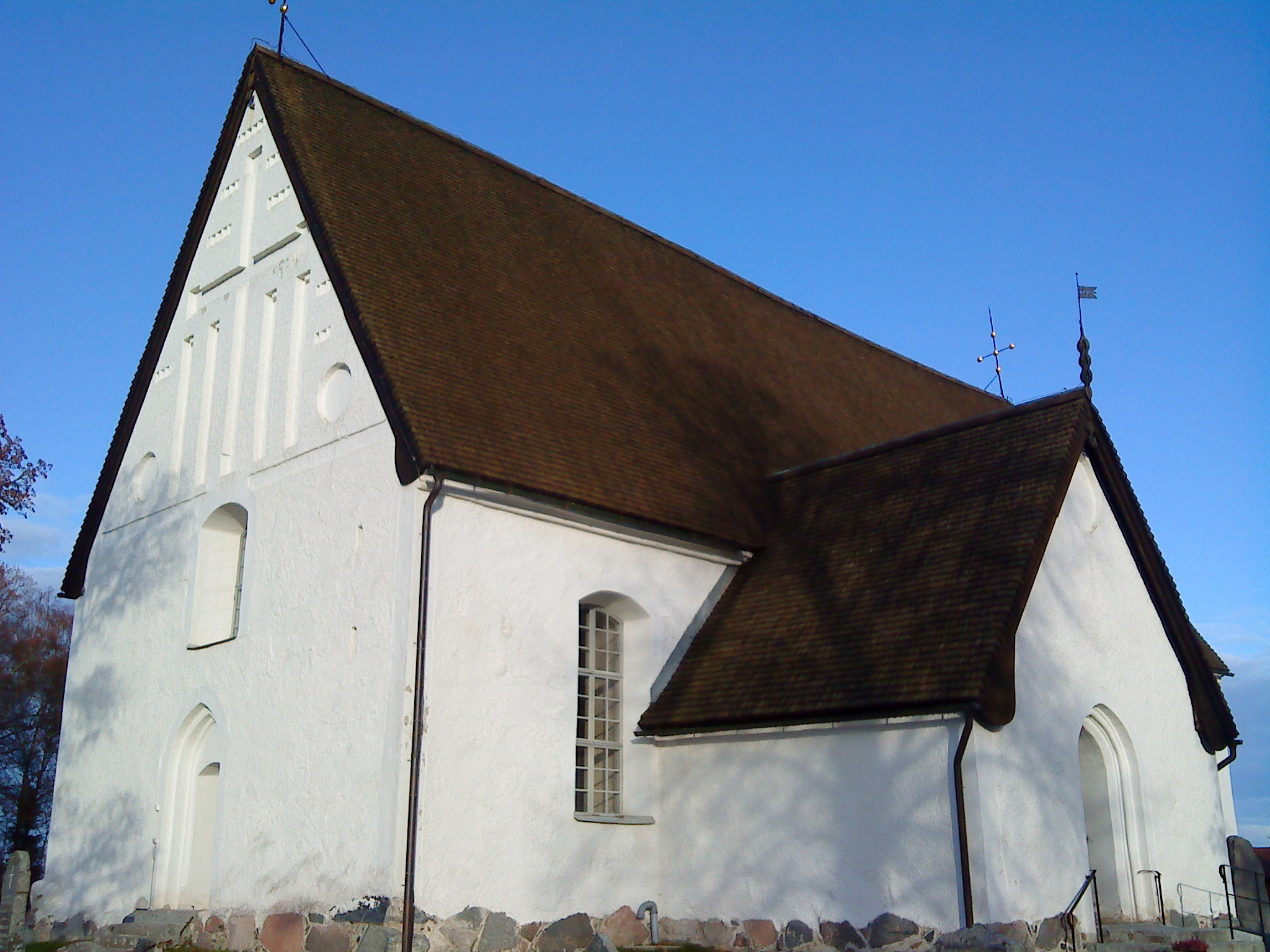Viksta Church on:
[Wikipedia]
[Google]
[Amazon]
 Viksta Church ( sv, Viksta kyrka) is a medieval church located north of
Viksta Church ( sv, Viksta kyrka) is a medieval church located north of
 Viksta Church ( sv, Viksta kyrka) is a medieval church located north of
Viksta Church ( sv, Viksta kyrka) is a medieval church located north of Uppsala
Uppsala (, or all ending in , ; archaically spelled ''Upsala'') is the county seat of Uppsala County and the List of urban areas in Sweden by population, fourth-largest city in Sweden, after Stockholm, Gothenburg, and Malmö. It had 177,074 inha ...
in Uppsala County
Uppsala County ( sv, Uppsala län) is a county or ''län'' on the eastern coast of Sweden, whose capital is the city of Uppsala. It borders the counties of Dalarna, Stockholm, Södermanland, Västmanland, Gävleborg, and the Baltic Sea.
Provi ...
, Sweden. It is part of the Archdiocese of Uppsala
The Archdiocese of Uppsala ( sv, Uppsala ärkestift) is one of the thirteen dioceses of the Church of Sweden and the only one having the status of an archdiocese.
Lutheran archdiocese
Uppsala is the seat of the Lutheran Archbishop of Uppsala. Th ...
(Church of Sweden
The Church of Sweden ( sv, Svenska kyrkan) is an Evangelical Lutheran national church in Sweden. A former state church, headquartered in Uppsala, with around 5.6 million members at year end 2021, it is the largest Christian denomination in Sw ...
).
History and architecture
Viksta Church was built circa 1280. An earlier, probably wooden roof and ceiling was replaced by the present roof supported by vaults sometime between 1430 and 1460. Thefresco
Fresco (plural ''frescos'' or ''frescoes'') is a technique of mural painting executed upon freshly laid ("wet") lime plaster. Water is used as the vehicle for the dry-powder pigment to merge with the plaster, and with the setting of the plaste ...
s which decorate the vaults were painted in 1503. The church still largely retains its medieval appearance; the biggest change made after the Reformation
The Reformation (alternatively named the Protestant Reformation or the European Reformation) was a major movement within Western Christianity in 16th-century Europe that posed a religious and political challenge to the Catholic Church and in ...
was an enlargement of the windows carried out in 1761. The eastern (choir
A choir ( ; also known as a chorale or chorus) is a musical ensemble of singers. Choral music, in turn, is the music written specifically for such an ensemble to perform. Choirs may perform music from the classical music repertoire, which ...
) wall still has the original medieval windows. On the same wall are some unusually well-made gable decorations made with brick
A brick is a type of block used to build walls, pavements and other elements in masonry construction. Properly, the term ''brick'' denotes a block composed of dried clay, but is now also used informally to denote other chemically cured cons ...
. The external, wooden belfry was built in 1744-45 while the cemetery wall still contains two medieval lychgate
A lychgate, also spelled lichgate, lycugate, lyke-gate or as two separate words lych gate, (from Old English ''lic'', corpse), also ''wych gate'', is a gateway covered with a roof found at the entrance to a traditional English or English-style ch ...
s.
The church contains a number of medieval art objects. The wooden triumphal cross
A rood or rood cross, sometimes known as a triumphal cross, is a cross or crucifix, especially the large crucifix set above the entrance to the chancel of a medieval church.
Alternatively, it is a large sculpture or painting of the crucifixion ...
is medieval, and so is a gilded copper processional cross
A processional cross is a crucifix or cross which is carried in Christian processions. Such crosses have a long history: the Gregorian mission of Saint Augustine of Canterbury to England carried one before them "like a standard", according to ...
(14th century). Another precious item is a chalice
A chalice (from Latin 'mug', borrowed from Ancient Greek () 'cup') or goblet is a footed cup intended to hold a drink. In religious practice, a chalice is often used for drinking during a ceremony or may carry a certain symbolic meaning.
Re ...
from the early 16th century. In the choir stands two wooden sculptures from the Middle Ages
In the history of Europe, the Middle Ages or medieval period lasted approximately from the late 5th to the late 15th centuries, similar to the post-classical period of global history. It began with the fall of the Western Roman Empire a ...
depicting female saints, one of which has been identified as Bridget of Sweden
Bridget of Sweden (c. 1303 – 23 July 1373) born as Birgitta Birgersdotter, also Birgitta of Vadstena, or Saint Birgitta ( sv, heliga Birgitta), was a mystic and a saint, and she was also the founder of the Bridgettines nuns and monks after t ...
.
References
External links
* {{Churches in Uppland Churches in Uppsala County Churches in the Diocese of Uppsala Churches converted from the Roman Catholic Church to the Church of Sweden Church frescos in Sweden